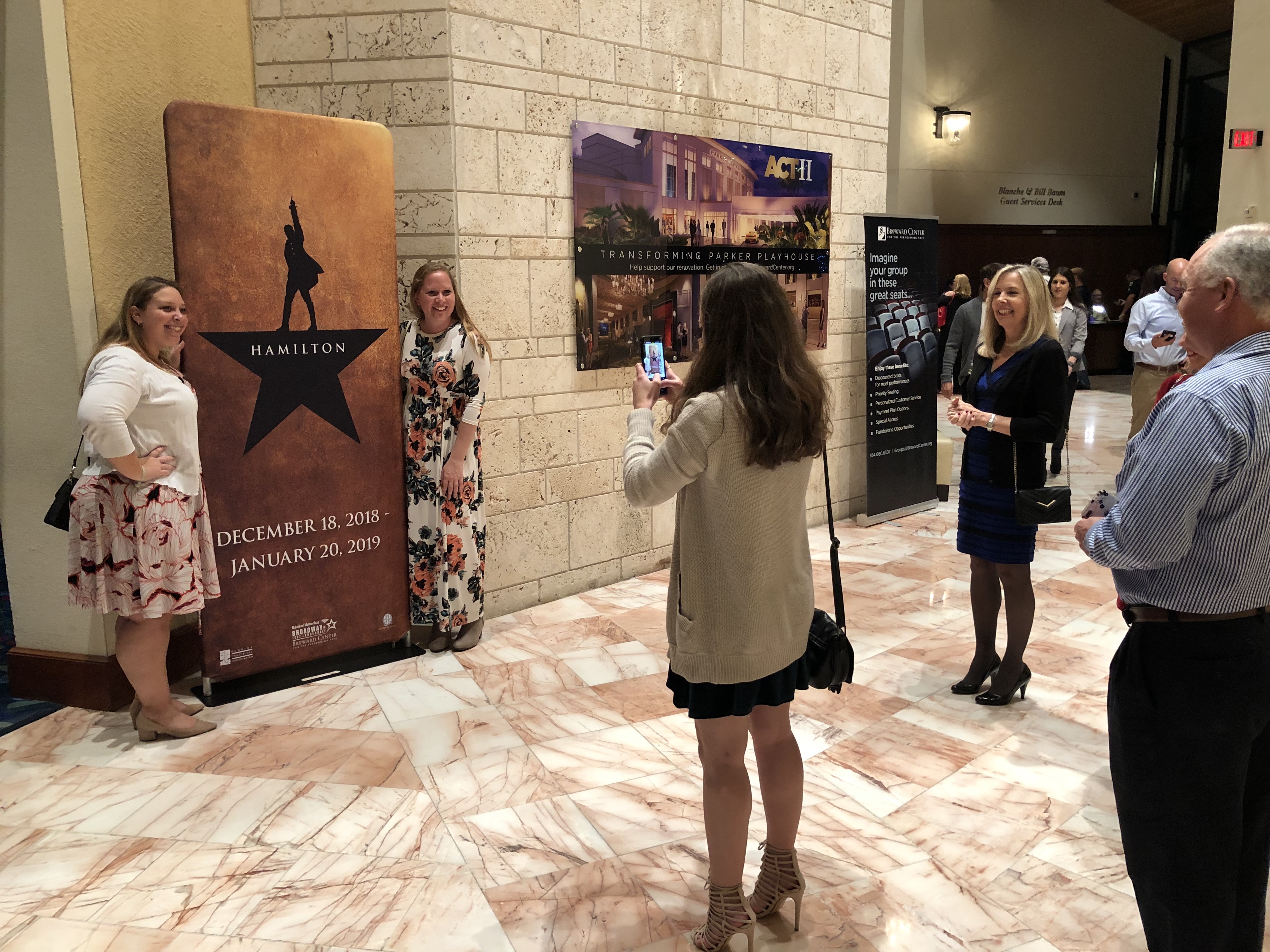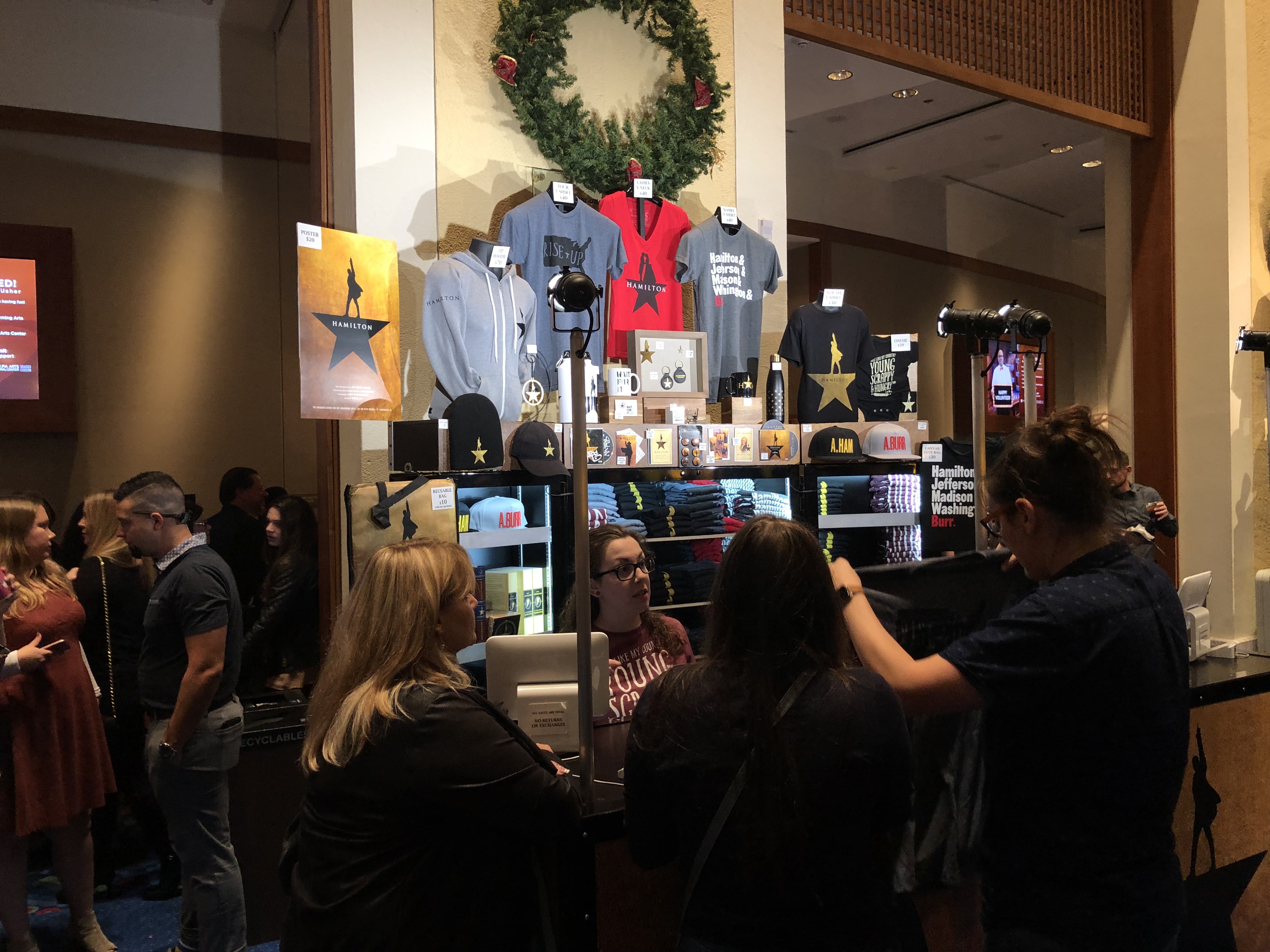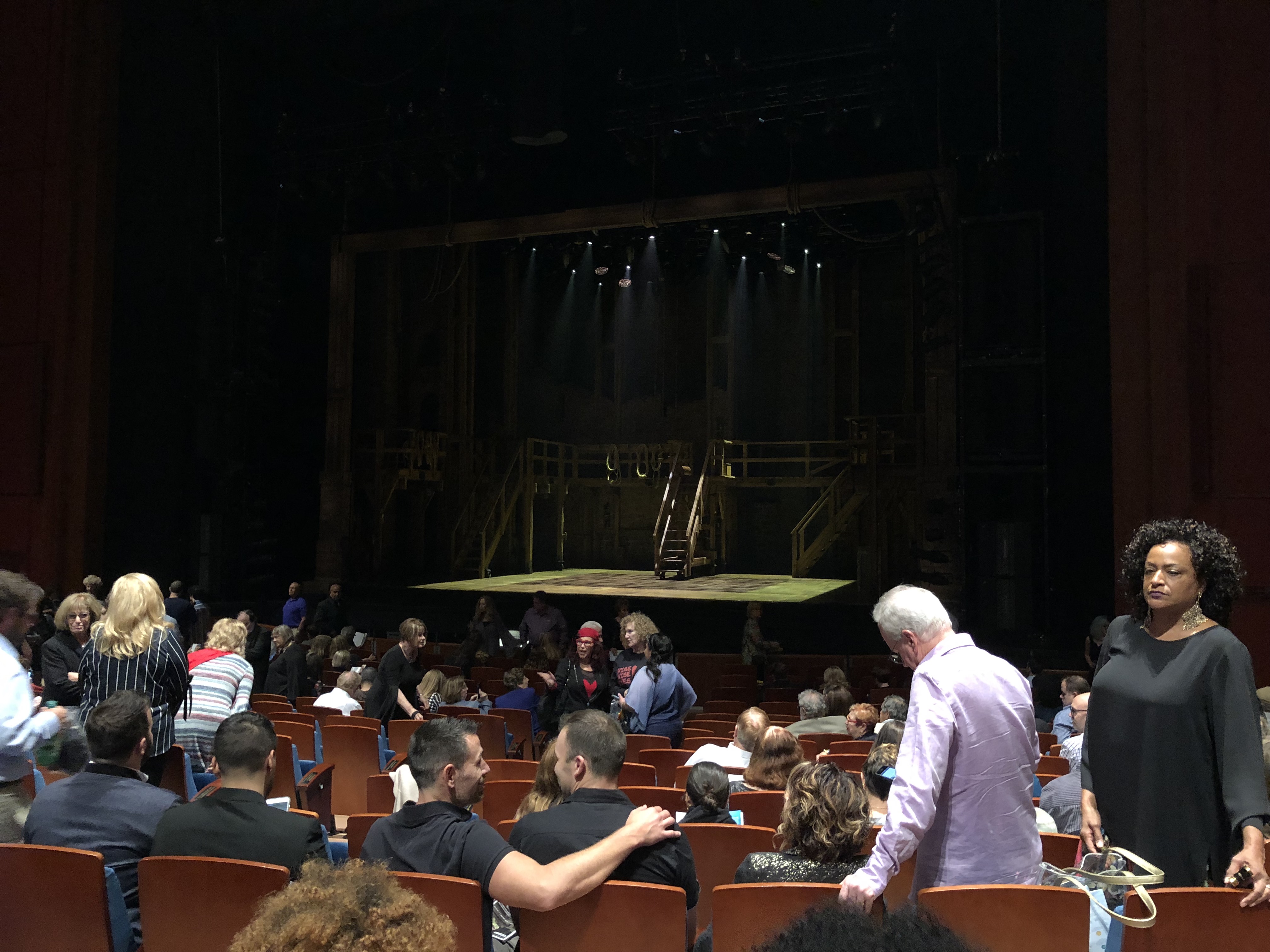Zoetic Stage’s innovative production of Sweeney Todd plays through Sunday April 7 at the Adrienne Arsht Center
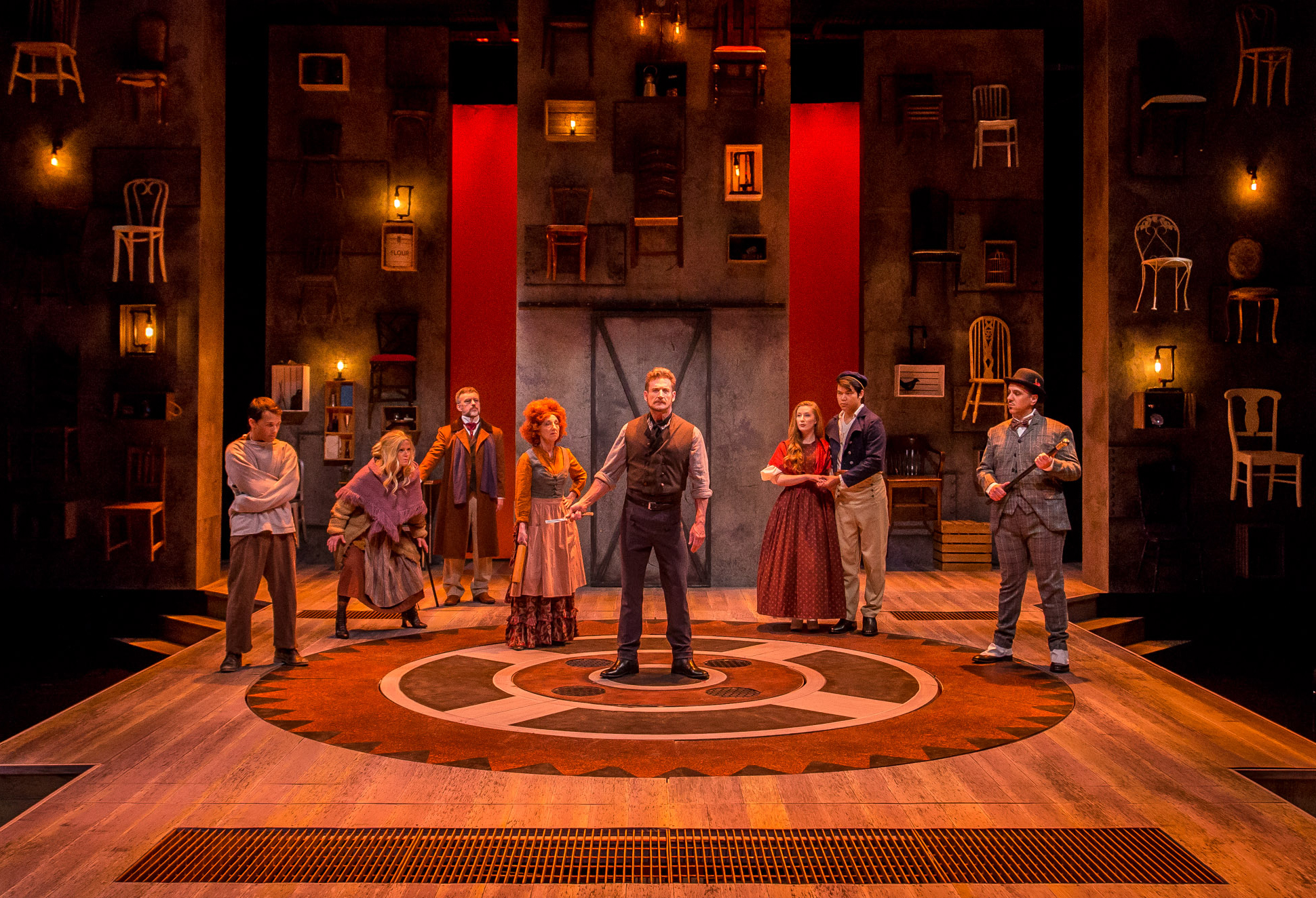
SHADE-O-METER RATING
4 OUTTA 5 WERKS: “SHE GAVE GOOD FACE – SHE SERVED IT”

What’s Sweeney Todd? It’s a musical with words and lyrics by Stephen Sondheim. The show is produced by the local production company, Zoetic Stage, and it’s staged at Carnival Studio Theater. What’s the Carnival Studio Theater? It’s the black box space at the Adrienne Arsht Center. It’s hold about 250 people. How was the venue? It’s a nice, intimate space. There’s not a bad seat in the house.
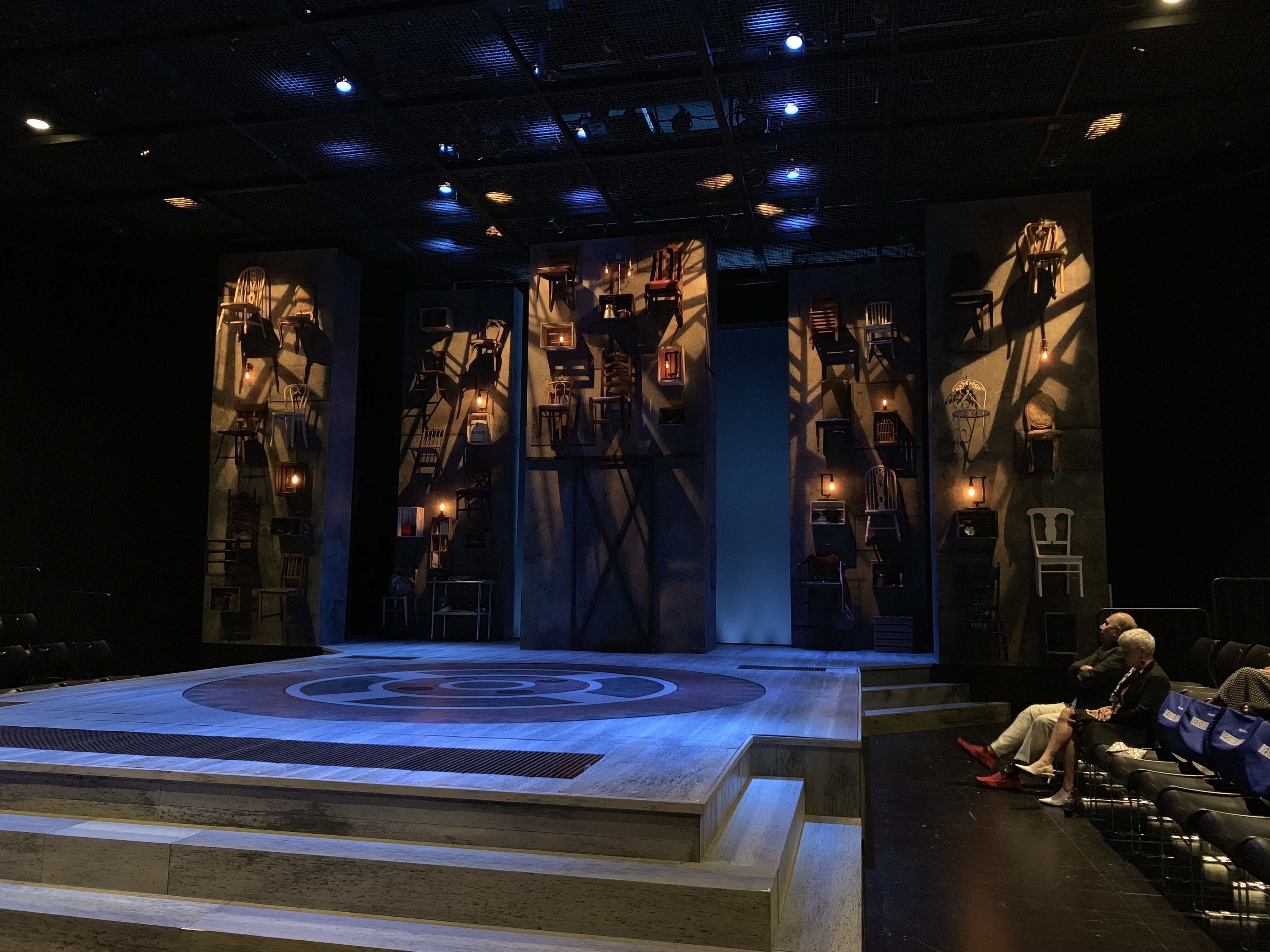
How was the parking? The venue has valet parking, of course, but that appears to be a production. There’s always a long line. There’s a parking lot right across the street, where it costs $20 to park. Strangely, all the times we’ve been there, the lot was half empty. Does the venue serve liquor? They have a small bar. How were the drinks? A white wine was $11. It was fine. Does the venue serve food? They have a few types of candy and chips. How was the food? We didn’t get any of that. How much were the tickets? $55. Was the show sold out? Almost, but not quite.
 How was the show? For those who aren’t aware of the plot, Sweeney Todd is a Victorian melodramatic revenge-tale, where the titular character and his female counterpart, Misses Lovett, get revenge on the society that’s wronged them by cannibalizing the upper crust in meat pies, and secretly feeding them to the lower classes (as noted in one song, “How gratifying for once to know that those above will serve those down below.”). As originally staged by Hal Prince, the production was a metaphor for the destructive nature of the machine, complete with a symbolic representation—a massive industrial set via the Industrial Revolution. Zoetic’s production of the musical was staged in the round, with actors, at times, who were right beside you. Regarding the performers, all were excellent, including Aloysius Gigi, where he seemed at times to exploit the parallels between his own resemblance to Robert Englund (a.k.a., Freddy Krueger) and Todd’s bogeyman persona. And in an interesting twist, the vocally-demanding role of Adolfo Pirelli was was sung—exceptionally so—in man-drag by Kimberly Doreen Burns, the same performer who portrayed the Beggar Woman.
How was the show? For those who aren’t aware of the plot, Sweeney Todd is a Victorian melodramatic revenge-tale, where the titular character and his female counterpart, Misses Lovett, get revenge on the society that’s wronged them by cannibalizing the upper crust in meat pies, and secretly feeding them to the lower classes (as noted in one song, “How gratifying for once to know that those above will serve those down below.”). As originally staged by Hal Prince, the production was a metaphor for the destructive nature of the machine, complete with a symbolic representation—a massive industrial set via the Industrial Revolution. Zoetic’s production of the musical was staged in the round, with actors, at times, who were right beside you. Regarding the performers, all were excellent, including Aloysius Gigi, where he seemed at times to exploit the parallels between his own resemblance to Robert Englund (a.k.a., Freddy Krueger) and Todd’s bogeyman persona. And in an interesting twist, the vocally-demanding role of Adolfo Pirelli was was sung—exceptionally so—in man-drag by Kimberly Doreen Burns, the same performer who portrayed the Beggar Woman.
 How was the music? The quality and influence of the music from Sweeney Todd is sufficiently well-documented that it would be foolish to comment on it here. Suffice it to say, it’s excellent. How was the set design and staging? If there were a standout in this production, the lighting and stage design would be it. The venue offers full-scale lighting capabilities, and it was obvious that the designer capitalized on that. For instance, as there was no blood in the production, all fell back on red lights that glared at the audience to indicate that a murder had occurred. Regarding the staging, there were odes to experimental theater, such as when the Johanna character walked around with a prison door in from of her to symbolize her institutionalization. Another nice touch was the likely Hamilton-inspired double-rotation stage, or concentric stages, where one stage rotates within another. This convention was most efficiently used to dispose of Sweeney’s victims, where a victim would fall to the floor, only to be dispatched to the back of the stage by a half revolution of the stage.
How was the music? The quality and influence of the music from Sweeney Todd is sufficiently well-documented that it would be foolish to comment on it here. Suffice it to say, it’s excellent. How was the set design and staging? If there were a standout in this production, the lighting and stage design would be it. The venue offers full-scale lighting capabilities, and it was obvious that the designer capitalized on that. For instance, as there was no blood in the production, all fell back on red lights that glared at the audience to indicate that a murder had occurred. Regarding the staging, there were odes to experimental theater, such as when the Johanna character walked around with a prison door in from of her to symbolize her institutionalization. Another nice touch was the likely Hamilton-inspired double-rotation stage, or concentric stages, where one stage rotates within another. This convention was most efficiently used to dispose of Sweeney’s victims, where a victim would fall to the floor, only to be dispatched to the back of the stage by a half revolution of the stage.
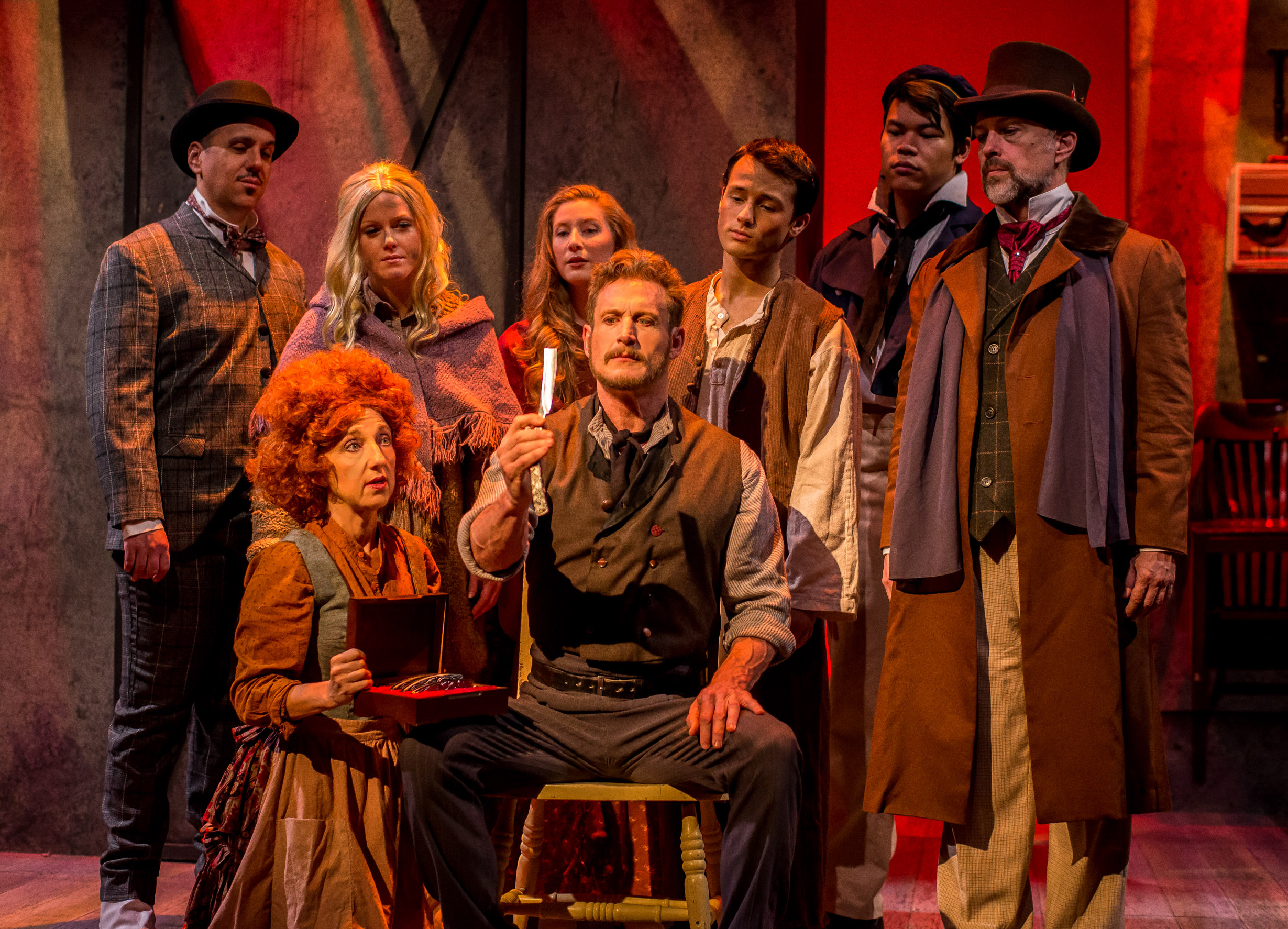
How was the costume design? The costume design was in-line with the original production. However, I’m familiar with most of the various incantations of Misses Lovett, and I don’t recall her with a hair getup quit like what was presented in this production. Credit should be given for that innovation. How did the audience react? They appeared to like it. Of note, the cast picked an audience member to shave for the song, “The Contest.” What could have improved the show? There were some minor sound issues with the audio for the actor who played Tobias, but it was fixed before the character’s showpiece song, “Not While I’m Around.” Also, some of the audio was either low or muffled at times. However, it wasn’t to the point of distraction. What was surprising about the show? I wasn’t expecting concentric stages. To me, that was a pleasant surprise.
Correction: this review previously noted that the production utilized pre-recorded music. That was an error. The production had an offstage “orchestra” that was comprised of six musicians.
The Carnival Studio Theater is located at the Adrienne Arsht Center at 1300 Biscayne Blvd., in Miami, Florida. The production runs through Sunday April 7. Tickets can be purchased at the box office or on the website.



